Animal Antics
Last week, we linked to 25 spectacular photos of the Northern Lights—nature in all her glory. This week, nature in all its goofiness. Yes, the Comedy Wildlife Photography Awards winners for this year have been announced. Says NPR:
The organization fields thousands of submissions for each of its photo categories: creatures of the land, creatures of the air, creatures of the sea, a junior award for photographers 18 years old or under, an internet portfolio award, and a people's choice award.
The top prize was won by Jennifer Hadley for her photo of a three-month-old lion cub falling out of a tree in the Serengeti.
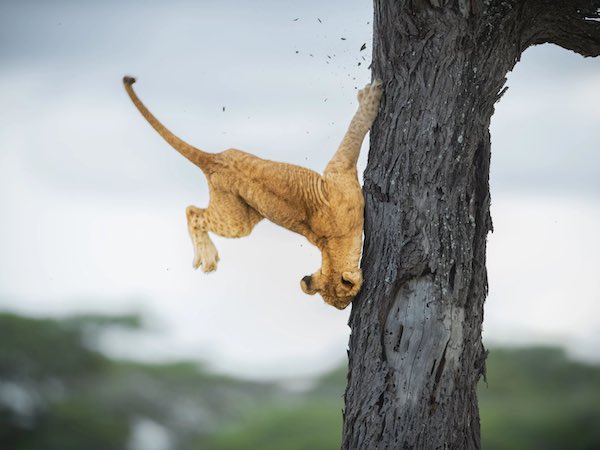
Jennifer Hadley/Comedy Wildlife 2022
Other winning photos included a salmon attacking a bear, a heron seemingly about to be devoured by a hippo, a crane attacking a bull, and more.
Wishing Weld
Christmas is hard upon us. Is your shopping done, if that’s the sort of thing you are inclined to do? If you’re still looking for the perfect gift for that special someone, Boing Boing has a great suggestion: welding lessons. They link to welding and industrial arts instruction site Hazard Factory (not a comforting name) which offers classes for all skill levels. (They will even do birthday parties.) The site has an interesting tab labeled “Mayhem” with links to flamethrowers and something called “Flaming Tetherball” which starts off with a safety disclaimer.
Flaming Tetherball™, a sport invented by our own Rusty Oliver, has been played at Hazard Factory for over fifteen years, without incurring any serious injury to participants or bystanders. In the roughly twenty years we have been playing it, no serious injuries have been incurred.
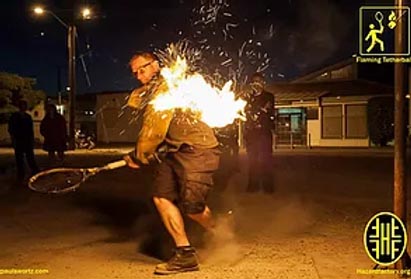
Still, we like the idea of welding classes as a Christmas gift. After all, if there’s one thing the movies of the 1980s taught us, it’s that welding can be a stepping stone to a career as an exotic dancer. Be a steel town girl on a Saturday night!
Puppy Wrap
Maybe your special someone wouldn’t go for welding lessons. What about a dog? And if you are going to give someone a dog for Christmas, you’ll want to wrap it. But how? This helpful video, via Laughing Squid, explains how to wrap a border collie.
Bringing new meaning to the phrase “paper training.” Presumably other breeds can be wrapped the same way, just using more or less wrapping paper. It probably helps to slip some Valium in the dog’s Snausages first.
Beautiful Books
Books always make great Christmas gifts, and if you are looking for a good gift book, check out “The 60 Most Beautiful Books of 2022,” from the Beautiful Books YouTube channel.
Rare Books
Perhaps the greatest human invention of all time—arguably better than the wheel, definitely better than sliced bread—is the book. And over the 2,000 years that the book has existed, it has taken many forms and utilized many technologies.
For those who want to geek out on the history of the book, via the New York Times, the Grolier Club in Manhattan is hosting an exhibition called “Building the Book from the Ancient World to the Present Day,” co-curated by Barbara Heritage, associate director of the Rare Book School at the University of Virginia. The exhibition
draws on the more than 100,000 items in the school’s teaching collection. There are printing blocks, binding tools, ink brushes, paper samples, printer’s proofs, strange contraptions and of course plenty of books, from an ancient Sumerian tablet to a replica eighth-century Japanese Buddhist sutra to a dinged-up copy of Madonna’s “Sex.”
… What a book is has certainly changed over time, as clay tablets, papyrus scrolls, parchment and quills have given way to codexes, movable type, mechanized printing processes and e-readers. But book history isn’t a story of linear progress, the show emphasizes, but of different technologies and forms coexisting and overlapping.
And it’s also not just a Eurocentric narrative. The show (which also exists in an online version) includes a Tibetan samta (a wooden tablet with a reusable surface), a Sri Lankan ola leaf manuscript, and a group of Ethiopian wood-encased manuscript Bibles, as well as early printed books from East Asia, where movable type was developed centuries before Gutenberg’s press.
A distinctive aspect of Rare Book School is its dedication to “tactile learning,” as the exhibition’s companion volume puts it. Rather than peering through glass, students handle objects — sometimes as many as 500 in a single course.
If you want to see this exhibition in person, hurry—it ends December 23.
Wednesday
Many of us ponder the great existential and unanswerable questions of all (“What’s the meaning of life?”), some more utilitarian questions (“Paper or plastic?”), and some more ominous (“Where’d that snake go?”). But sometimes, we come across a question that can be answered with a single click. We give you the website “Is it Wednesday?” whose sole purpose is, indeed, to have an animated frog tell you if it’s Wednesday or not.
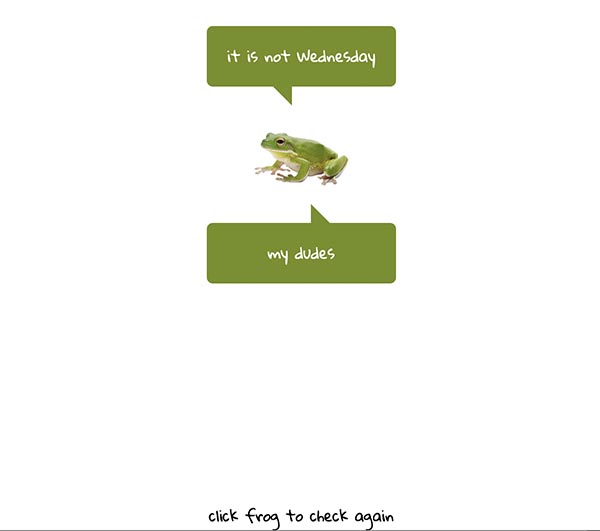
Seeing Red (Somehow)
Do you have problems hitting certain brand colors? There may be a new workaround. Via Boing Boing, Akiyoshi Kitaoka, a professor of experimental psychology at Ritsumeikan University in Kyoto, Japan, created this graphic of a Coke can to demonstrate “how our minds can imagine colors that aren't there. In this case, the red of the can is an illusion—the can is made of black, white, and blue stripes.”
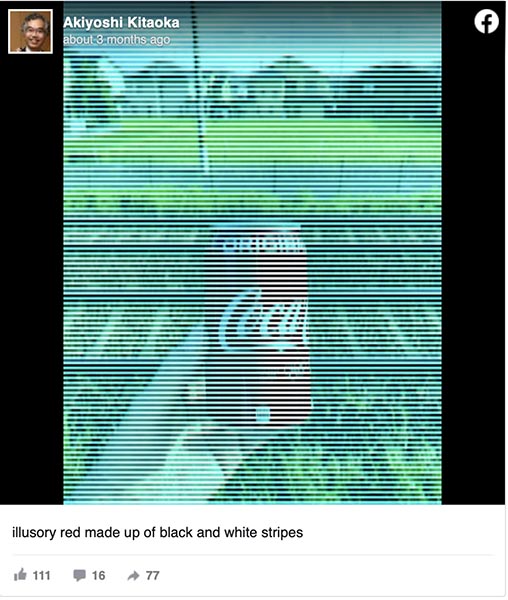
Seeing Red Magenta
You may have seen the news recently that Pantone has announced that its 2023 Color of the Year is Viva Magenta. However, via Print magazine, artist and activist Stuart Semple is having none of it.
For starters, Semple just released a color pigment through his online art supply store, Culture Hustle, that openly mocks Viva Magenta. It’s called Viva Meh-Genta, and 50-gram jars are available for pre-order now for $12.50 a piece. All Viva Meh-Genta sales will help fund Semple’s democratic vision for a crowd-sourced “people’s color of the year” next year, which will be decided upon by the entire art community.
“It’s frustrating that trends are set by corporations, designers, and manufacturers, and then creators seem to fall in line; it becomes a self-fulfilling prophecy. And then they profit so heavily from it,” Semple told me. “Very rarely are these forecasts ever really in sync with the way culture is or how people really feel. I remember a trend forecaster telling me once they were going to make next season about owls, and sure enough, the following year, retail had owls everywhere. I’d love to see a more democratic way of articulating the color of our time or the mood.” Thus the people’s color of the year project was born as a grassroots effort to reclaim some power from big corporations.
Dang, and we already painted our office walls Viva Magenta.
Desk Drive
In a previous Around the Web installment, we have linked to Volkswagen’s motorized desk chair, and a robotic cubicle whose walls can chase you around. Now, how about. “fully immersive” workstation that you may never be able to leave? Via Core77, computer hardware manufacturer Cooler Master has developed the Orb X, a “fully immersive multi-purpose semi-enclosed station.”

(What’s with the black light? Do they intend to sell this in a 1970s Spencer Gifts?)
Core77’s Rain Noe is not impressed.
I mean, not being able to get out of the desk is not what they’re going for, marketing-wise; instead they write “Integrating different technologies and features, ORB X enables users to embark on their immersive journey while staying productive and competitive for the long haul.”
Frankly, we’d be more worried about the thing snapping shut abruptly.
But c’mon, read between the lines, people! How hard would it be to make the mechanism for that pivoting desk a bit sticky? Maybe the motor for the descending “dome enclosure” goes on the fritz, and the weight of the three 27" flatscreens makes it too heavy to lift manually? Or the leg recliner won't retract, making it impossible for you to stand and get any escape leverage?
We’ve all been stuck in the office at some point—but not literally!
Graphene in the Stretch
Was it a good week for graphene news? It’s always a good week for graphene news! Researchers at China’s Hebei University of Technology and the U.S.’s Pennsylvania State University have combined MXenes and laser-induced graphene foam nanocomposite to improve the design and performance of triboelectric nanogenerators (TENGs). Isn’t that great news? TENGs are power sources that can be used for flexible electronic devices—including wearables. Says (who else?) Graphene-Info:
The popularity of wearable electronics has induced demand for their parts, including power sources such as TENGs. Such power sources must be both stretchy and high-performance, holding up under various deformation conditions over hours of use. The researchers created a material system that enables a TENG to be stretchy and able to perform on dynamic surfaces, such as the human skin or the leaf of a plant.
… “The device can signal a personal trainer if their trainee using a wearable sensor is in the correct position for an exercise or is stretching or moving too far in a direction that could be dangerous,” Cheng said. “It can also alert the trainer if their trainee is over-training.”
The researchers identify some other unique uses:
The TENG can also be applied to changing surfaces such as a plant leaf.
“Typical sensors cannot grow or deform with the changing nature of a leaf,” Cheng said. “This device can be used over days, weeks, months or years as it grows and stretches with the leaf with continuous self-powering.”
When applied to a houseplant, a TENG sensor can detect an intruder passing through by sensing the wind the person creates. The sensor can then sound an alarm system or turn lights on in the house to deter the intruder.
It could perhaps also indicate if the plant is over-training.
The sensor also can be applied to a water faucet and detect minor droplets as they fall.
“It can help conserve energy and resources by alerting a user that there is a leak,” Cheng said.
Con Fusion
You may have heard the news this week that researchers are close to being able to harness nuclear fusion as the ultimate clean energy source. And while our first thought was “It’s Pons and Fleischmann all over again,” the results of the experiment actually do represent a milestone—but there are still miles to go. Nature provides a good overview:
Scientists at the world’s largest nuclear-fusion facility have for the first time achieved the phenomenon known as ignition — creating a nuclear reaction that generates more energy than it consumes. Results of the breakthrough at the US National Ignition Facility (NIF) [were] conducted on 5 December.
…The facility used its set of 192 lasers to deliver 2.05 megajoules of energy onto a pea-sized gold cylinder containing a frozen pellet of the hydrogen isotopes deuterium and tritium. The pulse of energy caused the capsule to collapse, creating temperatures only seen in stars and thermonuclear weapons, and the hydrogen isotopes fused into helium, releasing additional energy and creating a cascade of fusion reactions. The laboratory’s analysis suggests that the reaction released some 3.15 megajoules of energy — roughly 54% more than the energy that went into the reaction, and more than double the previous record of 1.3 megajoules.
“Fusion research has been going on since the early 1950s, and this is the first time in the laboratory that fusion has ever produced more energy than it consumed,” says Campbell.
However, they add a caveat.
However, while the fusion reactions may have produced more than 3 megajoules of energy — more than was delivered to the target — NIF’s 192 lasers consumed 322 megajoules of energy in the process. Still, the experiment qualifies as ignition, a benchmark measure for fusion reactions that focuses on how much energy went into the target compared to how much energy was released.
The researchers stress that NIF was not designed to be efficient, but “It was designed to be the biggest laser we could possibly build to give us the data we need for the [nuclear] stockpile research programme.”
NIF was not designed with commercial fusion energy in mind — and many researchers doubt that laser-driven fusion will be the approach that ultimately yields fusion energy. But Campbell believes that its latest success could boost confidence in the promise of laser fusion power and open the door to a programme focused on energy applications. “This is absolutely necessary to have the credibility to sell an energy programme,” he says.
Lawrence Livermore laboratory director Kim Budil described the achievement as a proof of concept. “I don’t want to give you a sense that we’re going to plug the NIF into the grid: that is definitely not how this works,” she said during a press conference in Washington DC. “But this is the fundamental building block of an inertial confinement fusion power scheme.”
Around the Webb Part the Continuation: Diving for PEARLS
The James Webb Space Telescope is up and running and recently turned its gaze toward a field of extragalactic PEARLS, studded with galactic diamonds. The latest image accompanies a paper published in the Astronomical Journal and is from NASA’s Prime Extragalactic Areas for Reionization and Lensing Science (PEARLS) GTO program. It shows a field of hundreds of galaxies of various shapes, colors, and sizes.
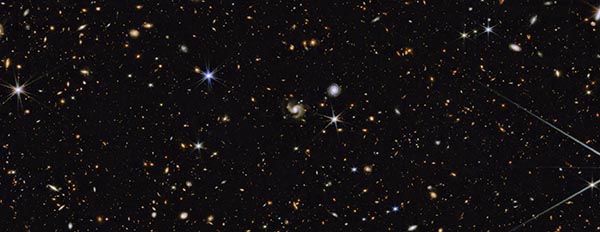
Caption from NASA: A swath of sky measuring 2% of the area covered by the full moon was imaged with Webb’s Near-Infrared Camera (NIRCam) in eight filters and with Hubble’s Advanced Camera for Surveys (ACS) and Wide-Field Camera 3 (WFC3) in three filters that together span the 0.25 – 5-micron wavelength range. This image represents a portion of the full PEARLS field, which will be about four times larger. Thousands of galaxies over an enormous range in distance and time are seen in exquisite detail, many for the first time. Light from the most distant galaxies has traveled almost 13.5 billion years to reach us. Image credit: NASA, ESA, CSA, A. Pagan (STScI) & R. Jansen (ASU). Science: R. Jansen, J. Summers, R. O’Brien, and R. Windhorst (Arizona State University); A. Robotham (ICRAR/UWA); A. Koekemoer (STScI); C. Willmer (UofA); and the PEARLS team.
The things we can do.
Art Attack
A lot of art is created to provoke, but what it will actually provoke can be anyone’s guess. In the case of one sculpture, it provoked the police to forcibly enter an art gallery to investigate what looked like a dead person. From Artnet:
The incident occurred on November 25 when the London Metropolitan Police received a call at 5.32 p.m. about a person who appeared to be unconscious inside Laz Emporium, the gallery on Soho’s Lexington Street opened by Steve Lazarides in October 2021. The gallery’s doors were locked at the time.
About 20 minutes later, “officers forced entry to the address, where they uncovered that the person was in fact a mannequin,” a police spokesperson replied in response to a inquiry from Artnet News. “The Met has a duty of care to respond when there is a welfare concern.”
The sculpture in question is called Kristina, by American artist Mark Jenkins, which depicts a woman dressed in a hoodie slumped over a table.

Kristina (2022) by Mark Jenkins, commissioned by Steve Lazarides. Courtesy of Laz Emporium.
The sculpture, which can be seen publicly through the gallery’s window, has surprised people before. When the work appeared at London art and design fair Decorex in October, paramedics were called, according to Blakemore.
And the punchline, which turns the whole thing into a Monty Python sketch:
the officers lectured Blakemore for having a sculpture of a human being that looked so real.
That explains all those Greek statues at the Met that were arrested for indecent exposure.
More Words
In recent editions of Around the Web, we have linked to Merriam-Webster’s word of the year (gaslighting) and the Oxford English Dictionary’s word of the year (goblin mode, apparently). Now it’s time for Dictionary.com to chime in, and their word of the year is “woman.” Well, at least we are familiar with it! Says The Guardian:
In a statement, the website said: “Our selection of woman … reflects how the intersection of gender, identity and language dominates the current cultural conversation and shapes much of our work as a dictionary.”
It also said: “Searches for the word woman on Dictionary.com spiked significantly multiple times in relation to separate high-profile events, including the moment when a question about the very definition of the word was posed on the national stage.”
Wreathed in Cheese
Do you like the holidays? Cheese? If yes to both then good news! Festoon your front door with fromage with the “cheese wreath” from the California Milk Advisory Board (CMAB) and the wine and cheese shop Lady & Larder. Says Food & Wine:
In honor of the festive season, the CMAB teamed up with the cheese shop run by twin sisters Sarah and Boo Simms to create the California Cheese Wreath Kit. The kit, the group explained, is made up of a collection of California cheeses, dried fruit, nuts, crackers, and other items used to create an edible arrangement for seasonal gatherings and gift-giving. And best of all, for each kit ordered, a $20 donation will be made to Feeding America (as part of a guaranteed donation of $10,000 to Feeding America.)

The California Cheese Wreath kit specifically features three cow's milk specialty cheeses from California farms alongside California almonds, several dried citrus wheels, raisins, cherries, crackers, and dried herbs, all finished with a round bamboo cheese board, as well as instructions for assembling a festive cheese wreath. Those interested can purchase a wreath for $175, available for pickup at Lady & Larder in Santa Monica. If you're not in the region, that's ok too, because the wreath is also available online and ships to most states.
In the Loop
Do you like Froot Loops cereal but wish you could limit yourself to only one loop? Well, now you can, with the Big Fruit Loop, which is exactly what it implies: it’s a giant Fruit Loop. Says Food & Wine:
That one big loop contains 930 calories and weighs around half a pound, or the equivalent of about half a box of regular Froot Loops mashed into one bowl-filling monstrosity.

Now, we hasten to add that this is not a real cereal, nor is it in any way endorsed or authorized by Kellogg’s. It’s actually a spoof from Brooklyn-based art collective MSCHF.
[Daniel Greenberg, MSCHF's co-founder] declined to explain what the production process for the Big Fruit Loop was like, other than to admit that “it was not easy.” He also said that the company had to reverse-engineer its loop to match the flavor of the Kellogg’s originals. To Greenberg, the two kinds of cereal taste “almost identical.” You know, minus one being gigantic and all.
MSCHF releases a new limited-edition drop twice a month, and it seems to enjoy shaking up our perceptions of the food space. Its “Illegal Chips” pushed against the arbitrary boundaries of which artificial flavors are (and aren't) acceptable, selling snacks that tasted like horse meat, Sicily’s Casu Marzu “maggot cheese,” and potentially deadly fugu. (The actual versions of those foods cannot legally be sold in the United States.) They’ve also collaborated with Rihanna’s Fenty Beauty on a line of individual lip gloss packets that either held a shimmery red shade of makeup or a mouthful of ketchup.
It can be a fine line.
On behalf of the whole WhatTheyThink team, we wish you the best of holiday seasons!
Did anything catch your eye “around the Web” this week? Let us know at [email protected].
This Week in Printing, Publishing, and Media History
December 12
1821: French novelist Gustave Flaubert born.
1901: Guglielmo Marconi receives the first transatlantic radio signal (the letter "S" [***] in Morse Code), at Signal Hill in St John’s, Newfoundland.
1999: American novelist, short story writer, and playwright Joseph Heller dies (b. 1923).
2020: English author John le Carré dies (b. 1931).
December 13
1962: NASA launches Relay 1, the first active repeater communications satellite in orbit.
1972: Apollo 17 astronauts Eugene Cernan and Harrison Schmitt become the last humans to set foot on the Moon.
December 14
1902: The Commercial Pacific Cable Company lays the first Pacific telegraph cable, from San Francisco to Honolulu.
1903: The Wright brothers make their first attempt to fly with the Wright Flyer at Kitty Hawk, N.C.
1948: Thomas T. Goldsmith Jr. and Estle Ray Mann are granted a patent for their cathode-ray tube amusement device, the earliest known interactive electronic game.
1972: Apollo astronaut Eugene Cernan is the last person to walk on the moon.
December 15
1791: The United States Bill of Rights becomes law after it is ratified by the Virginia General Assembly.
1939: Gone with the Wind (the highest inflation-adjusted grossing film) receives its premiere at Loew's Grand Theatre in Atlanta, Ga.
December 16
1775: English novelist Jane Austen born.
1901: Beatrix Potter privately publishes The Tale of Peter Rabbit. It goes on to sell over 45 million copies worldwide.
1917: British science fiction writer Arthur C. Clarke born.
1928: American science fiction writer Philip K. Dick born.
December 17
1790: The Aztec calendar stone is discovered at El Zócalo, Mexico City.
1892: The first issue of Vogue is published.
1903: The Wright brothers make the first controlled powered, heavier-than-air flight in the Wright Flyer at Kitty Hawk, N.C.
1937: American novelist John Kennedy Toole (A Confederacy of Dunces) born.
1989: The Simpsons first premieres on television with the episode “Simpsons Roasting on an Open Fire.”
December 18
1892: Premiere performance of The Nutcracker by Pyotr Ilyich Tchaikovsky in Saint Petersburg, Russia.
1958: Project SCORE, the world’s first communications satellite, is launched.
December 19
1776: Thomas Paine publishes one of a series of pamphlets in The Pennsylvania Journal entitled “The American Crisis.”
1843: The novella A Christmas Carol by Charles Dickens is first published. Bah!
1932: BBC World Service begins broadcasting as the BBC Empire Service.
December 20
1948: English keyboard player and producer Alan Parsons born.
1946: The film It’s a Wonderful Life is first released in New York City.
1946: Israeli-English magician, “psychic,” and spoon-mangler Uri Geller born.
1971: The international aid organization Doctors Without Borders is founded by Bernard Kouchner and a group of journalists in Paris, France.
December 21
1879: World premiere of Henrik Ibsen’s A Doll’s House at the Royal Theatre in Copenhagen, Denmark.
1913: Arthur Wynne’s “word-cross,” the first crossword puzzle, is published in the New York World. The Oreo cookie had been introduced a year earlier. Coincidence? (See if we can spot the cruciverbalists out there.)
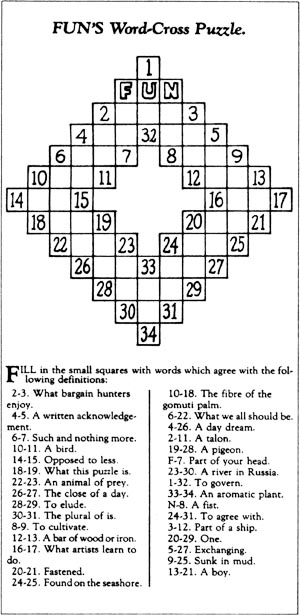
1937: Snow White and the Seven Dwarfs, the world’s first full-length animated feature, premieres at the Carthay Circle Theatre.
1940: The late, great American composer, singer-songwriter, guitarist, and producer Frank Zappa born. Watch out where the huskies go.
December 22
1808: Ludwig van Beethoven conducts and performs in concert at the Theater an der Wien, Vienna, with the premiere of his Fifth Symphony, Sixth Symphony, Fourth Piano Concerto (performed by Beethoven himself) and Choral Fantasy (with Beethoven at the piano).
1880: English novelist and poet George Eliot dies (b. 1819).
1891: Asteroid 323 Brucia becomes the first asteroid discovered using photography.
1936: Irish science historian and author James Burke (Connections) born.
2001: Richard Reid attempts to destroy a passenger airliner by igniting explosives hidden in his shoes aboard American Airlines Flight 63; as a result, air travelers passing through security will have to take off their #$^&@! shoes in perpetuity. So thanks for that, Mr. Reid.
December 23
1815: The novel Emma by Jane Austen is first published.
1893: The opera Hansel and Gretel by Engelbert Humperdinck is first performed.
1913: The Federal Reserve Act is signed into law by President Woodrow Wilson, creating the Federal Reserve System.
1947: The transistor is first demonstrated at Bell Laboratories.
December 24
1818: The first performance of “Silent Night” takes place in the church of St. Nikolaus in Oberndorf, Austria.
1822: English poet and critic Matthew Arnold born.
1851: The Library of Congress in Washington, D.C., burns.
1863: English author and poet William Makepeace Thackeray dies (b. 1811).
1871: The opera Aida premieres in Cairo, Egypt.
1906: Reginald Fessenden transmits the first radio broadcast consisting of a poetry reading, a violin solo, and a speech.
1968: The crew of Apollo 8 enters into orbit around the Moon, becoming the first humans to do so. They performed 10 lunar orbits and broadcast live TV pictures.
December 25
336: First documented Christmas celebration in Rome.
1642: English physicist and mathematician Isaac Newton born.
1758: Halley’s Comet is sighted by Johann Georg Palitzsch, confirming Edmund Halley’s prediction of its passage. This was the first passage of a comet predicted ahead of time.
1815: The Handel and Haydn Society, oldest continually performing arts organization in the United States, gives its first performance.
1890: American publisher, co-founder of Reader’s Digest Lila Bell Wallace born.
1924: American screenwriter and producer Rod Serling born.
1938: Czech author and playwright Karel ?apek dies (b. 1890).
2004: The Cassini orbiter releases Huygens probe which successfully lands on Saturn’s moon Titan on January 14, 2005.
December 26
1791: English mathematician and engineer, inventor of the Difference engine Charles Babbage born.
1871: Thespis, the first Gilbert and Sullivan collaboration, debuts. It does modestly well, but the two would not collaborate again for four years and the score has been lost.
1931: American librarian and educator, creator of the Dewey Decimal Classification Melvil Dewey dies (b. 1851).
1963: The Beatles’ “I Want to Hold Your Hand” and “I Saw Her Standing There” are released in the United States, marking the beginning of Beatlemania on an international level.
1966: The first Kwanzaa is celebrated by Maulana Karenga, the chair of Black Studies at California State University, Long Beach.
December 27
1831: Charles Darwin embarks on his journey aboard HMS Beagle, during which he will begin to formulate his theory of evolution.
1845: Journalist John L. O’Sullivan, writing in his newspaper the New York Morning News, argues that the United States had the right to claim the entire Oregon Country “by the right of our manifest destiny.”
1927: Kern and Hammerstein’s musical play Show Boat, considered to be the first true American musical play, opens at the Ziegfeld Theatre on Broadway.
1932: Radio City Music Hall, “Showplace of the Nation,” opens in New York City.
1941: English singer-songwriter and keyboard player Mike Pinder born.
1968: Apollo 8 splashes down in the Pacific Ocean, ending the first orbital manned mission to the Moon.
December 28
1895: The Lumière brothers perform for their first paying audience at the Grand Cafe in Boulevard des Capucines.
1895: Wilhelm Röntgen publishes a paper detailing his discovery of a new type of radiation, which later will be known as x-rays.
1902: The Syracuse Athletic Club defeated the New York Philadelphians, 5–0, in the first indoor professional football game, which was held at Madison Square Garden.
1922: American publisher and producer Stan Lee born.
1945: American novelist and journalist Theodore Dreiser dies (b. 1871).
1958: “Greatest Game Ever Played”: Baltimore Colts defeat the New York Giants in the first ever National Football League sudden death overtime game at New York’s Yankee Stadium.
1973: The United States Endangered Species Act is signed into law by Pres. Richard Nixon.
December 29
1170: Thomas Becket, Archbishop of Canterbury, is assassinated inside Canterbury Cathedral by followers of King Henry II; he subsequently becomes a saint and martyr in the Anglican Communion and the Catholic Church. Chaucer’s The Canterbury Tales are set during a pilgrimage to his shrine.
1766: Scottish chemist and the inventor of waterproof fabric Charles Macintosh born.
1851: The first American YMCA opens in Boston, Mass.
1916: A Portrait of the Artist as a Young Man, the first novel by James Joyce, was first published as a book by an American publishing house B. W. Huebschis after it had been serialized in The Egoist (1914–15).
1926: Austrian poet and author Rainer Maria Rilke dies (b. 1875).
1936: American actress and producer Mary Tyler Moore born.
1941: English singer-songwriter and flute player Ray Thomas born.
1949: KC2XAK of Bridgeport, Connecticut becomes the first Ultra high frequency (UHF) television station to operate a daily schedule.
1989: Czech writer, philosopher, and dissident Václav Havel is elected the first post-communist President of Czechoslovakia.
December 30
1865: English author and poet, Nobel Prize laureate Rudyard Kipling born.
1896: Canadian ice hockey player Ernie McLea scores the first hat-trick in Stanley Cup play, and the Cup-winning goal as the Montreal Victorias defeat the Winnipeg Victorias 6–5.
1927: The Ginza Line, the first subway line in Asia, opens in Tokyo, Japan.
1983: American computer programmer and businessman, co-founder of Instagram Kevin Systrom born.
December 31
1759: Arthur Guinness signs a 9,000 year lease at £45 per annum and starts brewing Guinness.
1790: Efimeris, the oldest Greek newspaper of which issues have survived till today, is published for the first time.
1878: Karl Benz, working in Mannheim, Germany, filed for a patent on his first reliable two-stroke gas engine, and he was granted the patent in 1879.
1879: Thomas Edison demonstrates incandescent lighting to the public for the first time, in Menlo Park, New Jersey.
1907: The first New Year’s Eve celebration is held in Times Square (then known as Longacre Square) in Manhattan. No word if Dick Clark was hosting, a joke that becomes more obscure with every passing year.
1955: General Motors becomes the first U.S. corporation to make over US$1 billion in a year.
1956: The Romanian Television network begins its first broadcast in Bucharest.
1959: American singer-songwriter and guitarist Paul Westerberg born.
1961: RTÉ, Ireland’s state broadcaster, launches its first national television service.
1980: Canadian philosopher and theorist Marshall McLuhan dies (b. 1911).
1983: The AT&T Bell System is broken up by the United States Government.
1998: The European Exchange Rate Mechanism freezes the values of the legacy currencies in the Eurozone, and establishes the value of the euro currency.
2019: The World Health Organization was informed of cases of pneumonia with an unknown cause, detected in Wuhan. This later turned out to be COVID-19, the cause of the COVID-19 pandemic.
2020: The World Health Organization's issues its first emergency use validation for a COVID-19 vaccine.
January 1
1772: The first traveler’s checks, which could be used in 90 European cities, are issued by the London Credit Exchange Company.
1773: The hymn that became known as “Amazing Grace,” then titled “1 Chronicles 17:16–17,” is first used to accompany a sermon led by John Newton in the town of Olney, Buckinghamshire, England.
1788: First edition of The Times of London, previously The Daily Universal Register, is published.
1879: English author and playwright E. M. Forster born.
1919: American soldier and author J. D. Salinger born.
1933: English dramatist Joe Orton born.
1970: The defined beginning of Unix time, at 00:00:00.
1971: Cigarette advertisements are banned on American television.
1983: The ARPANET officially changes to using the Internet Protocol, creating the Internet.
1984: The original American Telephone & Telegraph Company is divested of its 22 Bell System companies as a result of the settlement of the 1974 United States Department of Justice antitrust suit against AT&T.
1985: The first British mobile phone call is made by Michael Harrison to his father Sir Ernest Harrison, chairman of Vodafone.
1992: American computer scientist and admiral, co-developer of COBOL Grace Hopper dies (b. 1906).
1999: Euro currency is introduced in 11 member nations of the European Union (with the exception of the United Kingdom, Denmark, Greece and Sweden; Greece later adopts the euro).



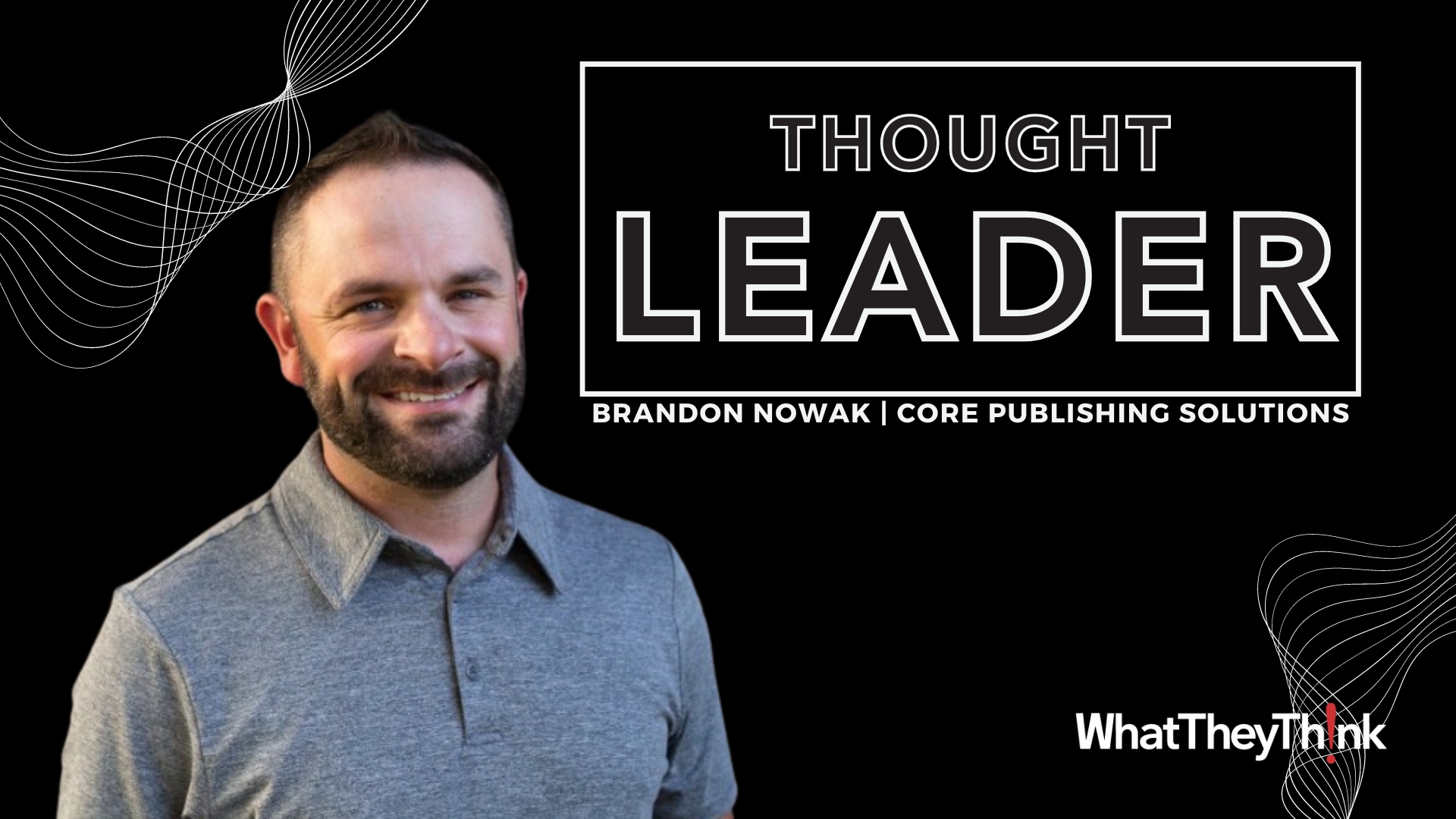
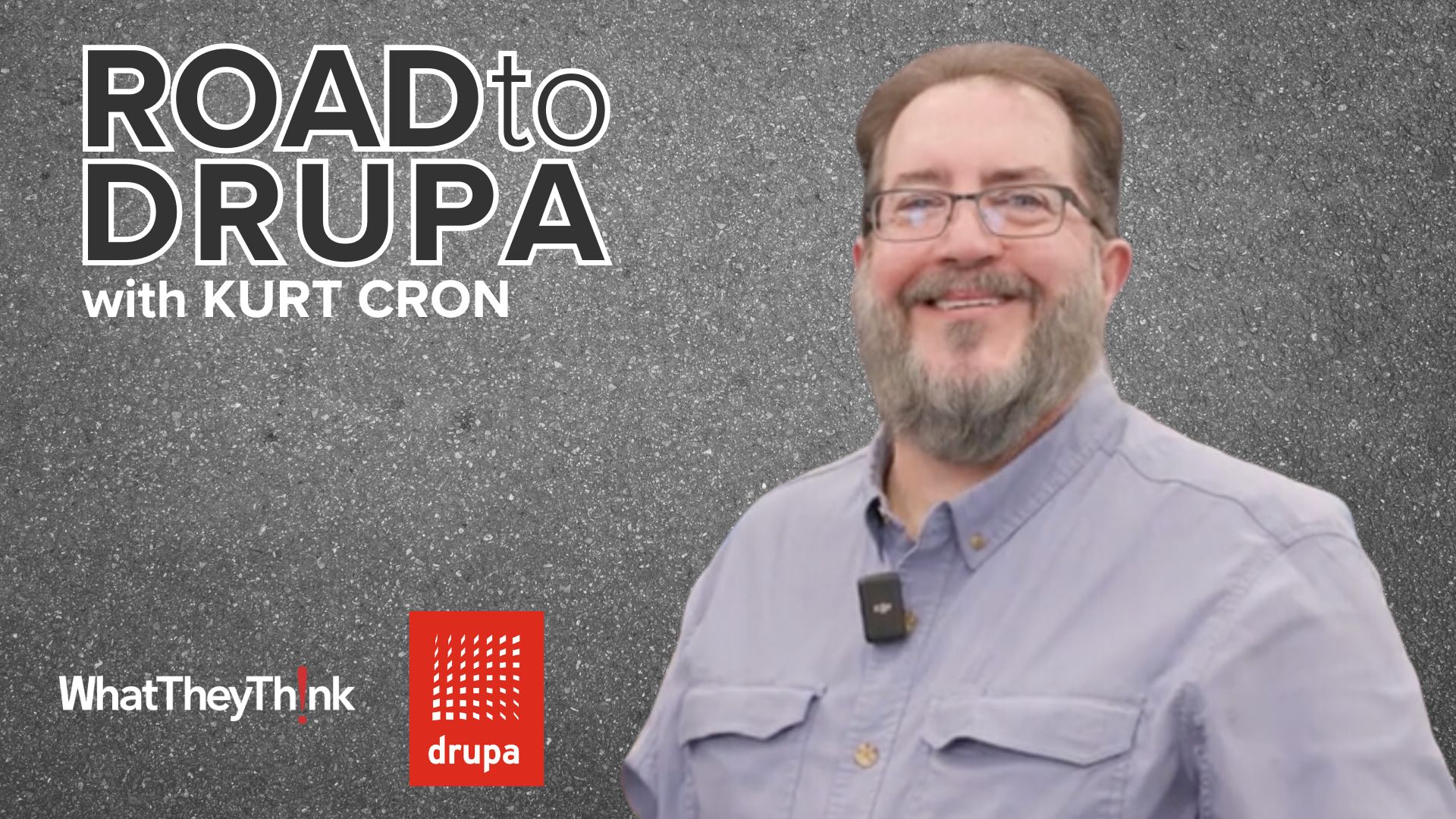

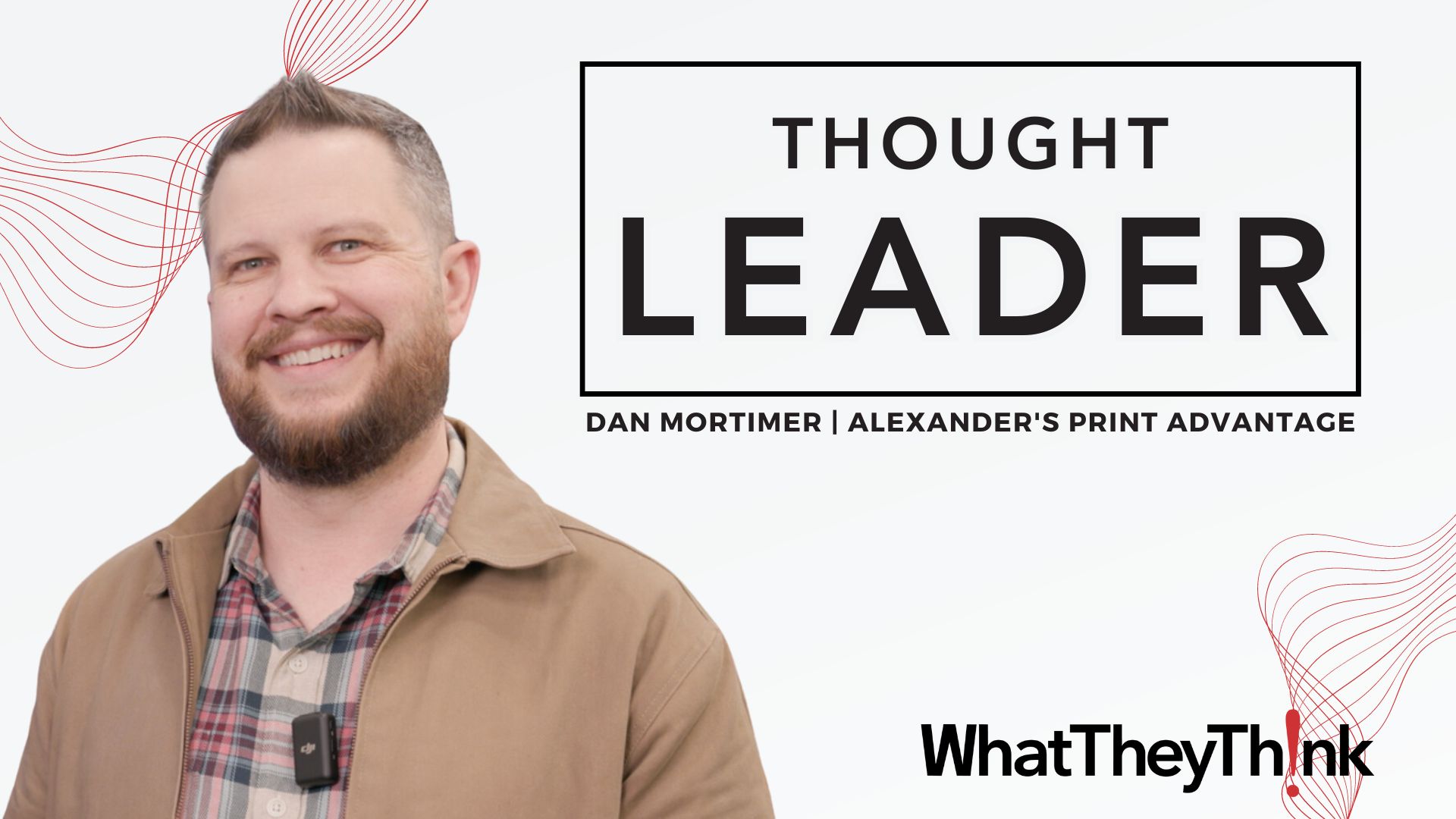



Discussion
Join the discussion Sign In or Become a Member, doing so is simple and free